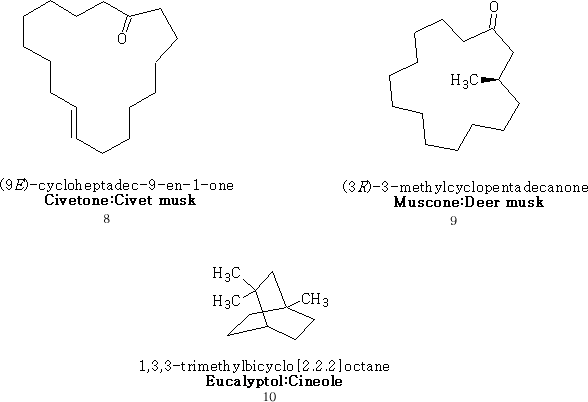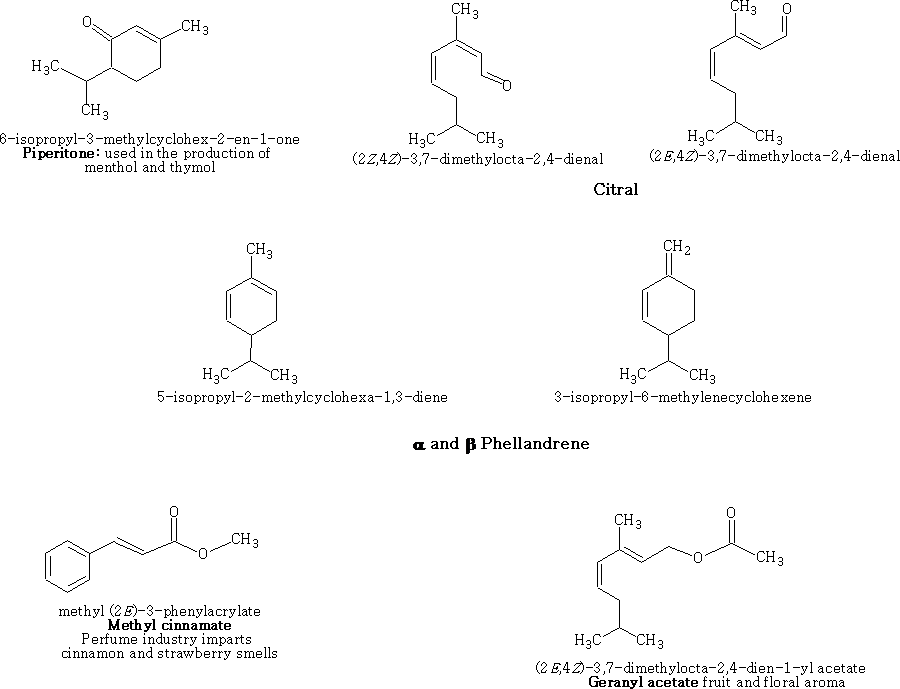Organic chemistry and Essential oils
Later we will look at the terpenes and a small amount of their chemistry, I would however, like to show that these substances have played an important roll from earliest times. As far back as the sixteenth century many compounds were discovered and used by extraction from plants. This use took the form of: Tinctures (alcoholic extracts of herbs) e.g. tincture of pennyroyal, an oil used in aromatherapy, {7} was used in a crude way to induce an abortion, Tisanes (Hot-water extracts of herbs), e.g. Bergamot used in Earl Grey tea. {6}, Along with the chemically related compound 6,7-dihydroxy bergamottin, it is believed to be responsible for the grapefruit juice effect in which the consumption of the juice affects the metabolism of a variety of pharmaceutical drugs. Decoctions, (long-term boiled extract of usually roots or bark): Macerates (cold infusions of plants with a high mucilage content (i.e. contain high amounts of exopolysaccharide). e.g. in wine making where the grapes are steeped in water.

Natural products are also used in perfumery, in fact Chanel no 5 used to contain the secretions of the perineal glands of the civet cat (the glands are found near the anus of the animal and are used to mark territory), civet musk {8} is a powerful fixative, (makes the scent last longer). The Chanel Company claims that, starting in 1998; natural civet has been replaced with a synthetic substitute. If we compare this with deer musk {9} we can see a resemblance in their structures.

Eucalyptus oil is an important essential oil (cineole based {10}) used in the perfume industry, it is also active as an antiseptic as a decongestant and even an anti-inflammatory agent. It has also had a use as an insect repellent, and is used in the flavouring industry for chewing gum (non cineole {}).

Eucalyptus is a mixture of many essential oils and compounds; hence it is a widely used substance.